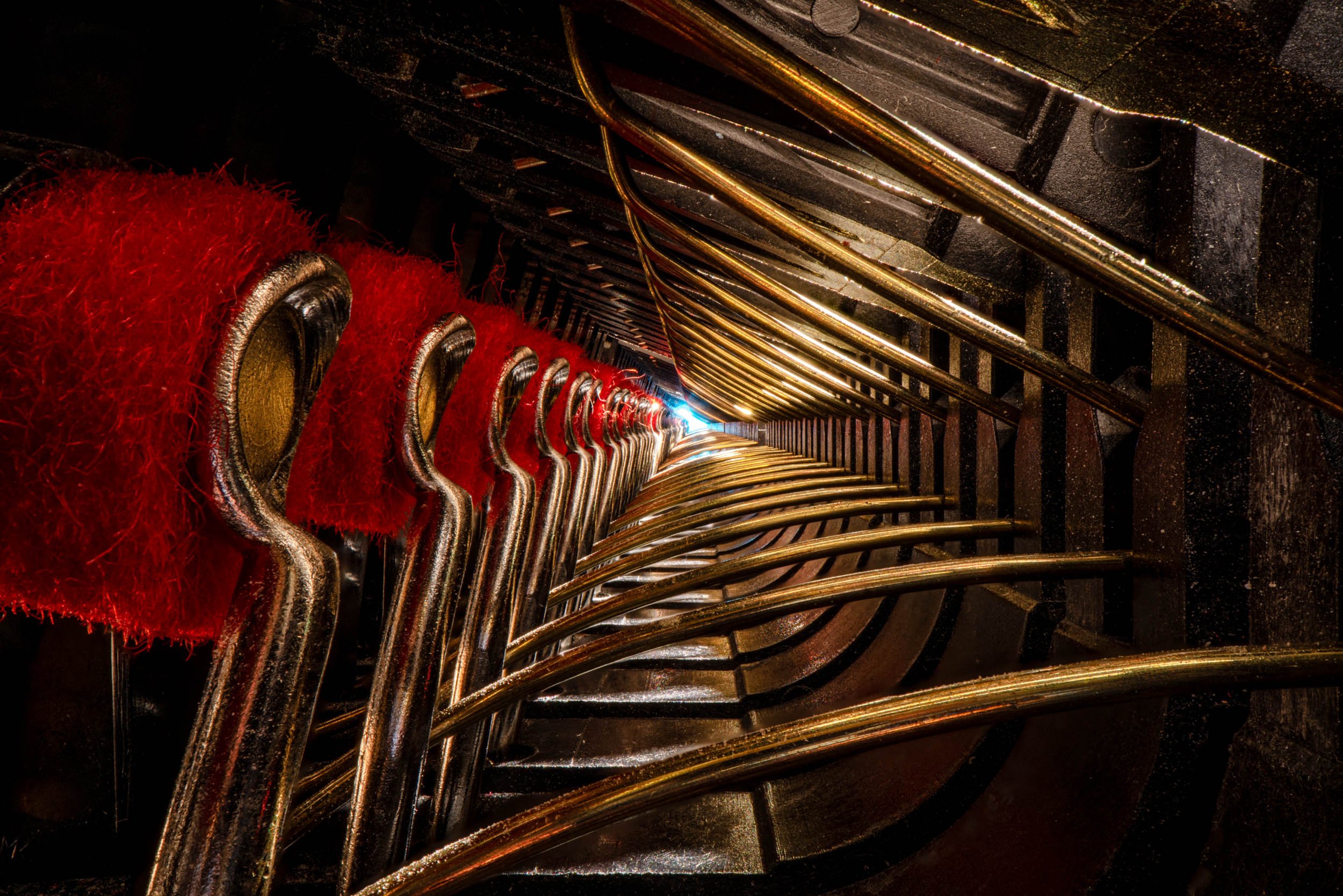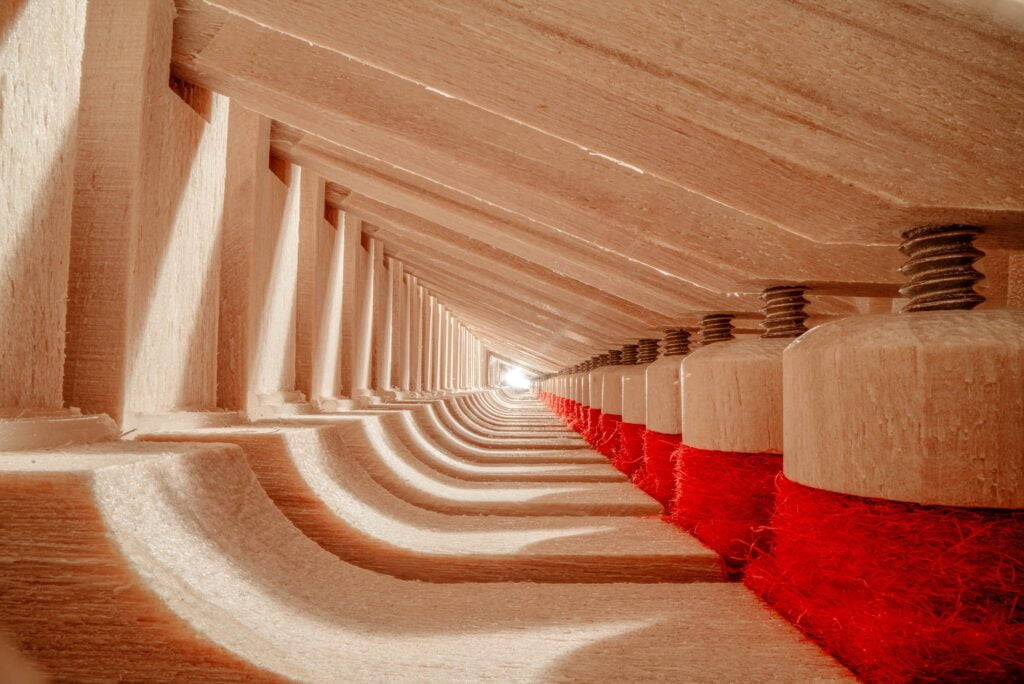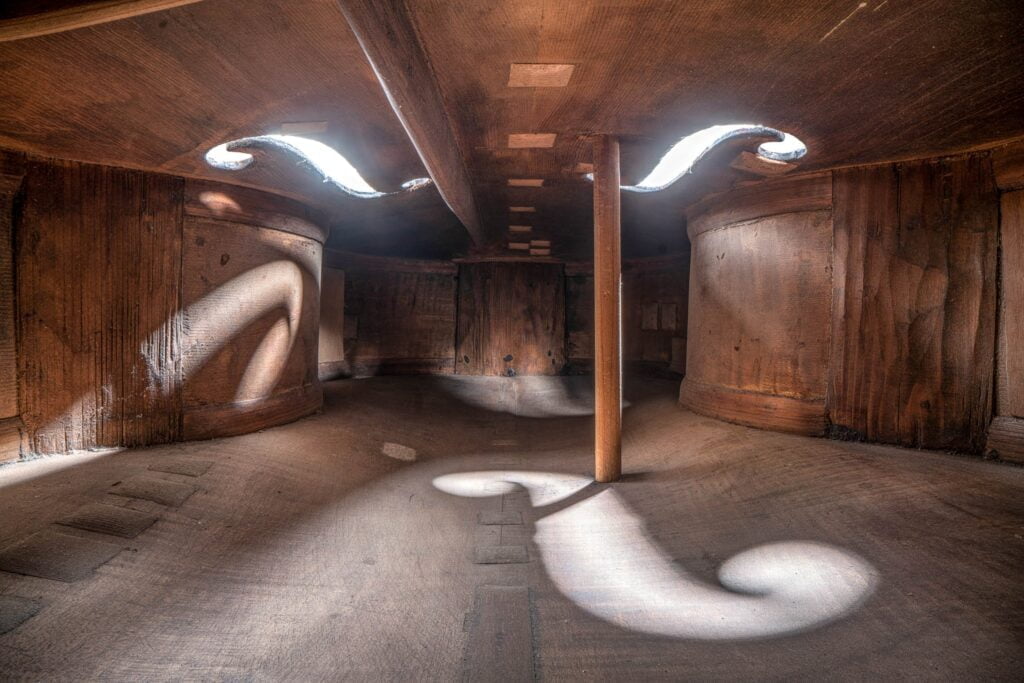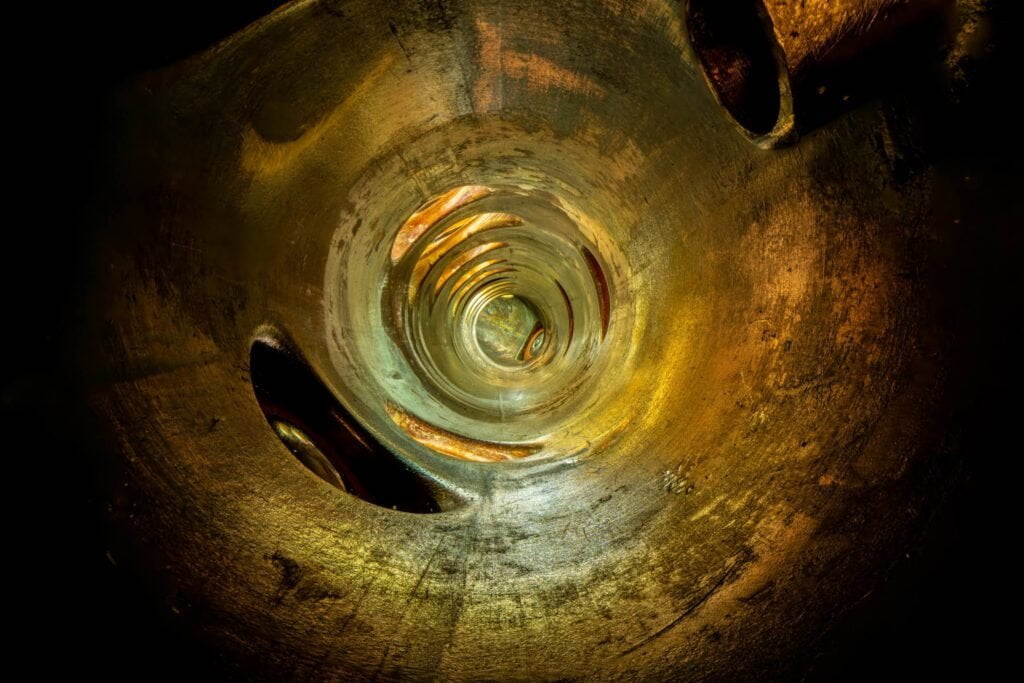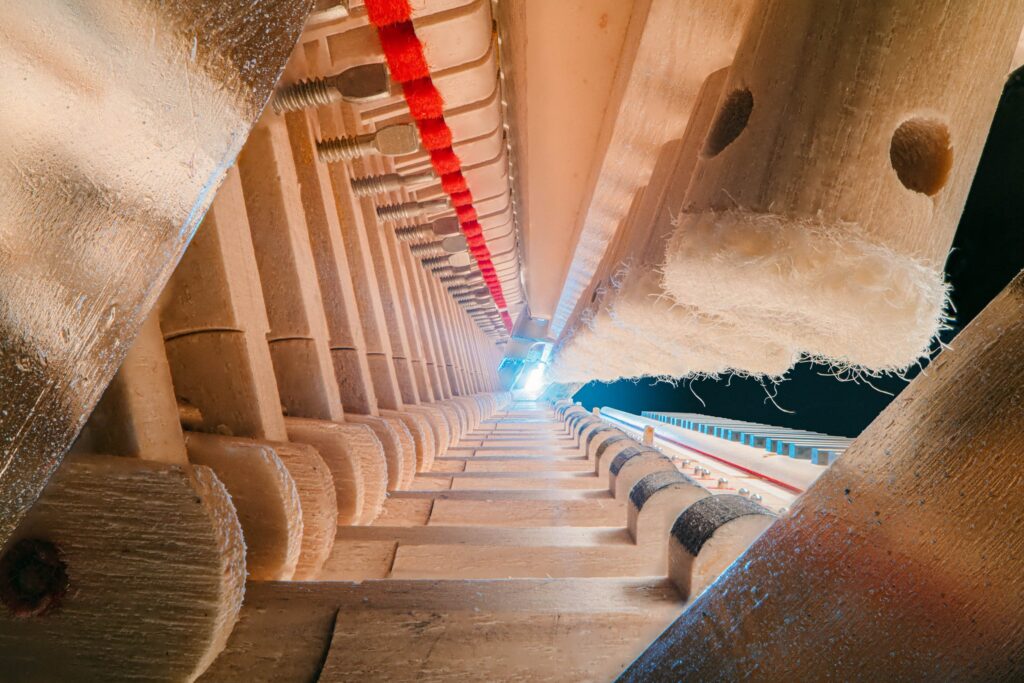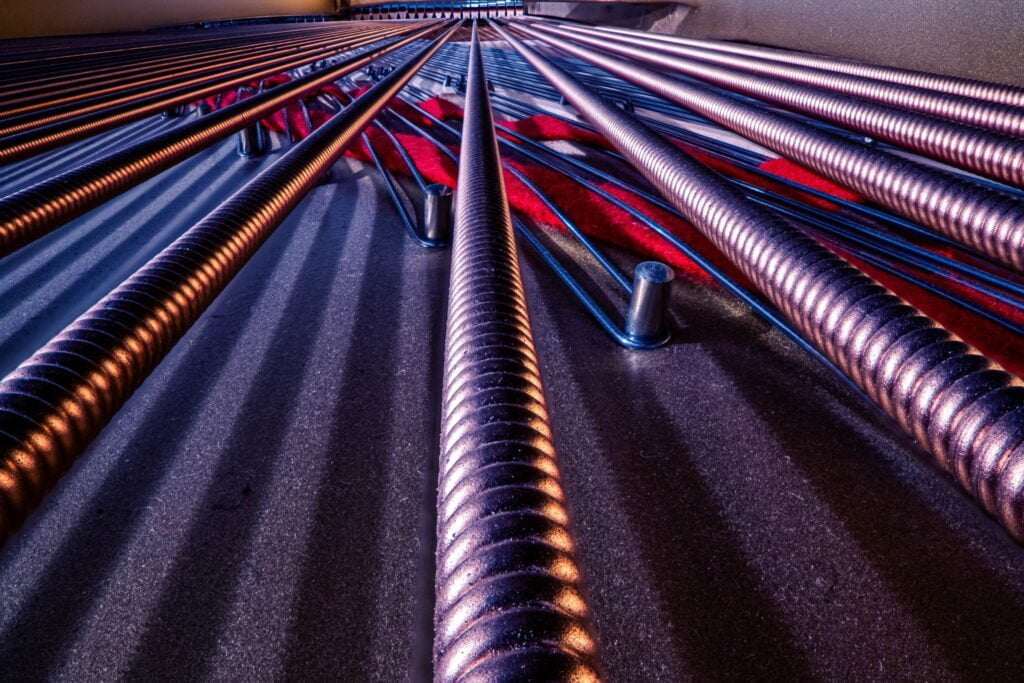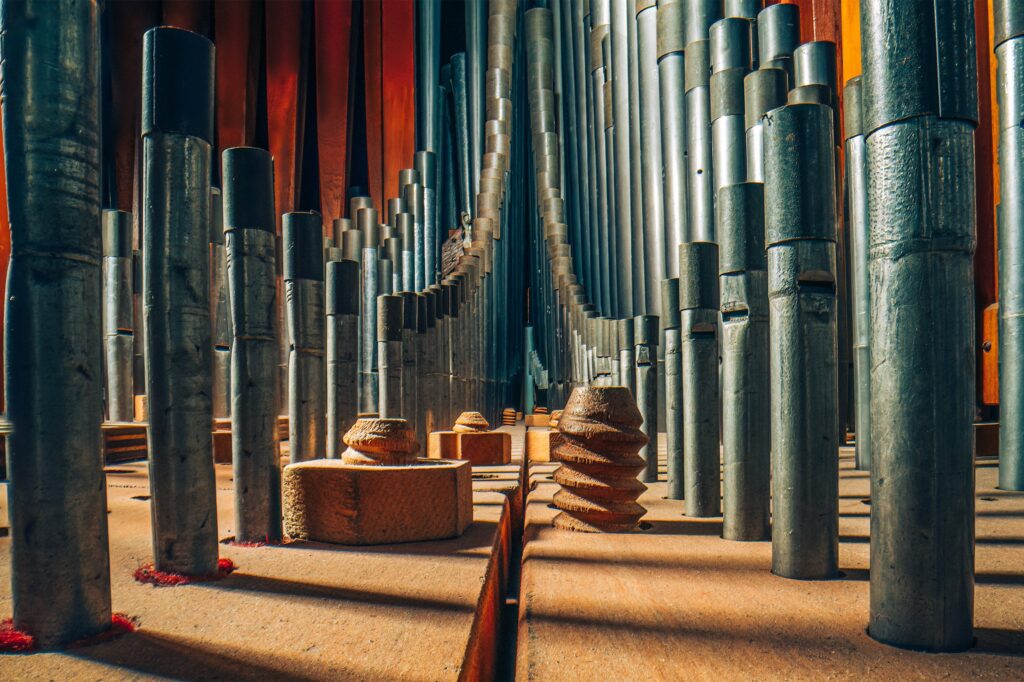Dissonance — the discomfort we feel when two or more musical notes feel mismatched — is more than just a subjective measure. In this video, Henry of Minute Physics delves into some of the physics involved in dissonance, first with simple sine waves and then with musical instruments. Our ears — and our brains — seem most troubled when two notes (and their overtones) are close but not quite matching in frequency. And, as Henry explains, the peaks and valleys between those agreements lead to many of the musical systems we have today. (Video and image credit: Minute Physics)
Tag: musical instruments

The Architecture of Music
Photographer Charles Brooks offers a rare glimpse into the interiors of musical instruments in this series. Whether stringed, wind, or percussion, an instrument’s unseen interior structure creates the acoustic resonance needed for their music. Brooks makes these spaces feel like vast cathedrals of sound, which, to the pressure waves emanating from the instruments, they are. Which is your favorite? Personally, I love the graceful lines of the cello and the rough surface of the didgeridoo. (Image credit: C. Brooks; via Colossal)

Airflow in the Opera
Like so many other performers, the singers and musicians of New York’s Metropolitan Opera House were left without a way to safely perform when the SARS-CoV-2 pandemic began in early 2020. In search of safe ways to perform and rehearse, the Met turned to researchers at nearby Princeton University, who worked directly with the performers to explore aerosol production and airflow in the context of professional opera.
Through visualization and other experiments, the team found that the highly-controlled breathing of opera singers actually posed a lower risk for spreading pathogens than typical speaking and breathing. Most of a singer’s voiced sounds are sustained vowels, which produce a slow, buoyant jet that remains close to a singer. The exception are consonants, which created rapid, forward-projected jets.
In the orchestra, the researchers found that placing a mask over the bell of wind instruments like the trombone reduced the speed and spread of air. One of the highest risk instruments they found was the oboe. Playing the oboe requires a long, slow release of air, but between musical phrases, oboists rapidly exhale any remaining air from their lungs and take a fresh breath. That rapid exhale creates a fast, forceful jet of air that necessitates placing the oboist further from others. (Image credit: top – P. Chiabrando, others – P. Bourrianne et al.; research credit: P. Bourrianne et al.; via APS Physics; submitted by Kam-Yung Soh)

Leaky Resonance
Some resonators aren’t perfect — nor are they meant to be! Here, researchers experiment with resonance using a disk shaking up and down over a pool of water. The disk never touches the water, but its movement makes the air above the water move in and out, like a miniature, changeable wind. The air flow distorts the water surface, creating waves just tens of microns high. Beneath the disk, the water forms standing waves, indicating resonance.
But the waves don’t stay under the disk. Beyond its edge, we see traveling waves moving outward, carrying some of the disk’s energy with them. This leakage is actually how many musical instruments, like a guitar, work. When the guitar strings are plucked, their vibrations are transmitted into the body of the guitar through its bridge, where the strings are anchored. The body acts as a resonator, amplifying the sound, some of which leaks out the sound hole. (Image and video credit: U. Jain et al.)

Buzzing Straws
Many woodwind instruments owe their sound to the vibration caused when air moves past parts of them. As Nick Moore demonstrates in this video, you can create a simple version of this effect with a slit drinking straw. The buzzing the straw produces when air passes through is a sort of aeroelasticity – it’s a combination of aerodynamic and structural forces that drive the behavior. Low pressure created by the fast-moving flow tends to draw the straw together, but once flow is stopped, the elasticity of the straw makes it rebound open, allowing air to flow again. Even more elaborate vibrations are possible when the straw is elastic. (Video credit: N. Moore)




